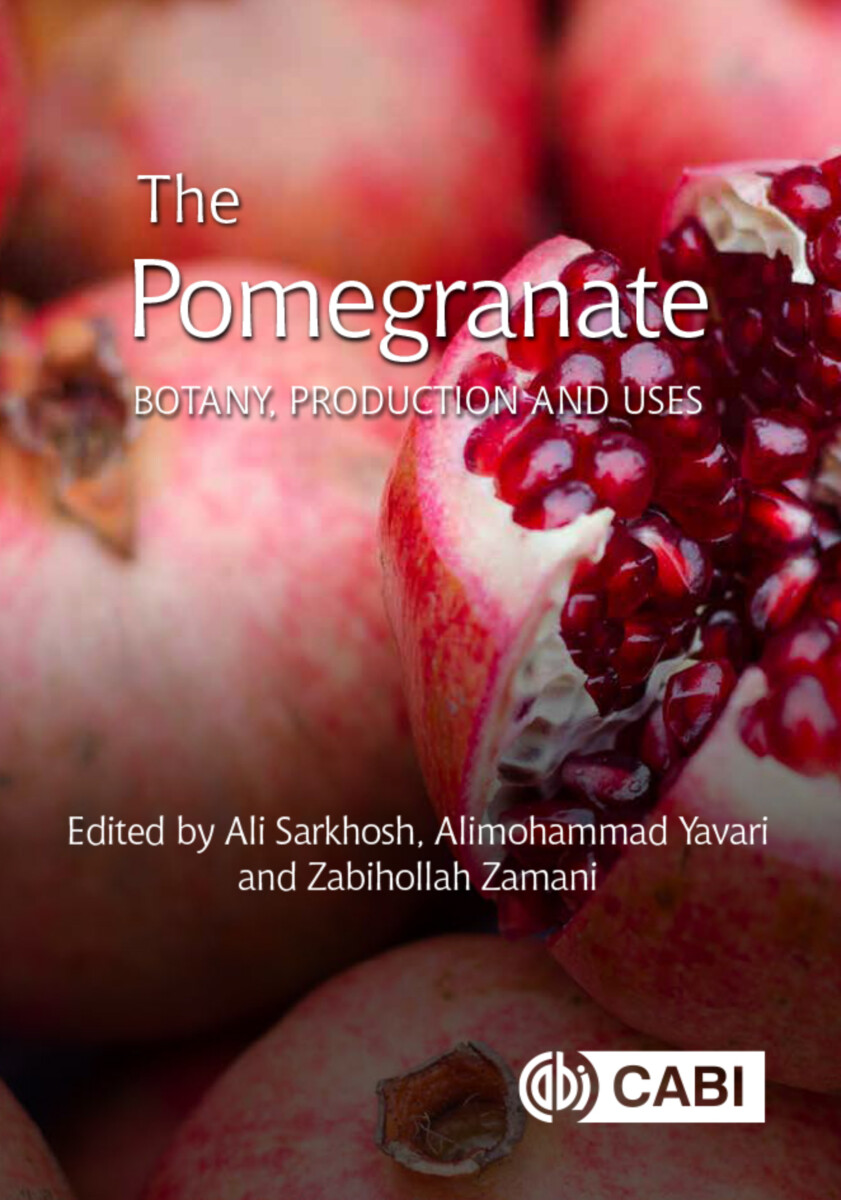- Publisher
CABI - Published
14th December 2020 - ISBN 9781789240764
- Language English
- Pages 584 pp.
- Size 6" x 9"
The pomegranate, Punica granatum L., is one of the oldest known edible fruits and is associated with the ancient civilizations of the Middle East. This is the first comprehensive book covering the botany, production, processing, health and industrial uses of the pomegranate. The cultivation of this fruit for fresh consumption, juice production and medicinal purposes has expanded more than tenfold over the past 20 years.
Presenting a review of pomegranate growing, from a scientific and horticultural perspective, this book provides information on how to increase yields and improve short- and medium-term grower profitability and sustainability. It covers:
- practices to mitigate pests, diseases and abiotic stresses;
- yield-based nutrition management;
- cultural practices for cultivars with horticultural traits such as earliness, high yield, improved taste, soft seeds, disease resistance, and low splitting and sunscald rates;
- increasing crop diversity to aid crop security; and
- composition, food uses and medicinal uses.
“Pomegranate is an outstanding encyclopedic handbook, the first comprehensive monograph offering perspectives on issues related to its botany, production, processing, health, and industrial use ….Pomegranate should be the standard textbook for horticultural research institutes, libraries, government agriculture departments, and plant nurseries. It provides a dense consolidation of relevant topics that can provide the field with valuable guidance as a manual for growers….It is well-illustrated, showing stages of flower and fruit development, plant habit, various approaches to pruning. The bibliographies are substantial; the editors did their subject justice. [This] well-bound volume should enjoy long use as a reference work.”
Plant Science Bulletin
1: Archaeology, History and Symbolism
2: Taxonomy, Botany and Physiology
3: Production and Growing Regions
4: Biodiversity, Germplasm Resources and Breeding Methods
5: World Pomegranate Cultivars
6: Propagation Techniques and Nursery Management
7: Environmental Requirements and Site Selection
8: Orchard Establishment and Tree Management
9: Soil and Nutrition
10: Water Requirements and Responses to Irrigation Restrictions
11: Physiological Disorders
12: Diseases and Management
13: Arthropod Pests and Their Management
14: Fruit Maturity, Harvest Methods and Technologies
15: Postharvest Biology and Storage
16: Processing and Industrialization
17: Pomegranate Bioactive Compounds and Health
18: World Pomegranate Market
Ali Sarkhosh
Ali Sarkhosh is currently serving as Assistant Professor and Extension Specialist (fruit crops) in the Horticultural Sciences Department at the University of Florida. Dr. Sarkhosh was born and raised in a farming family, who grew pomegranate and saffron for four generations in Iran. He did his Master thesis and Ph.D. dissertation in pomegranate genetic diversity and breeding under supervision of Professor Zamani (one of the editors in this book) at the University of Tehran in Iran. Dr. Sarkhosh worked as pomegranate expert in Australia for four years where he was responsible for all management aspects of 600 acres of pomegranate production. Toward improving pomegranate production, he published many sources of both technical and referred articles in pomegranate breeding and genetic diversity, postharvest, and production. Dr Sarkhosh has over 10 years of experience with commercial fruit production in U.S., Australia, New Zealand, and Iran. His research with tree fruits has focused on breeding, rootstocks and cultivars evaluations, and assessment of cultural practices to optimize yield and production efficiency.
Alimohammad Yavari
Alimohammad Yavari is currently serving as a private pomologist and consultant. Mr. Yavari received his M.S. in horticulture (Pomology) from the University of Urmia, Iran. He worked as research assistant at one of the biggest pomegranate collections and germplasms in the world located in Yazd (a city in central Iran). Mr. Yavari has excellent expertise in all aspects of pomegranate production as well as interacting worldwide with commercial growers and researchers in the field of fruit production, mainly tropical and subtropical fruits. His experiences in pomegranate production are mostly related to harvesting and exporting issues, and training courses for orchardists. He provides public and private sectors with designing projects and writing proposals related to pomegranate production and other tropical and subtropical fruits.
Zabihollah Zamani
Zabihollah Zamani is currently serving as full Professor in the Horticultural Sciences Department, University of Tehran, Iran. He received his B.S. and M.S. degrees in horticulture science and pomology from the University of Tehran, Iran and his Ph.D. in Fruit breeding and biotechnology from University of Sydney, Australia. With over 25 years experience, Dr. Zamani has contributed significant advances in all aspects of pomegranate production including, breeding, biotechnology, physiology, cultural practices, and postharvest. He played an important role in the development of his department in the area of fruit science and biotechnology. Toward improving pomegranate research and development, he published many refereed journal articles, technical reports and extension publications. Dr. Zamani supervised many M.S. and Ph.D. students who did their thesis on fruit crops, specifically on pomegranate. These achievements have been recognized with Dr. Zamani, being invited to serve high-profile advisory boards for developing or leading applied research projects in fruit crops including pomegranate.


